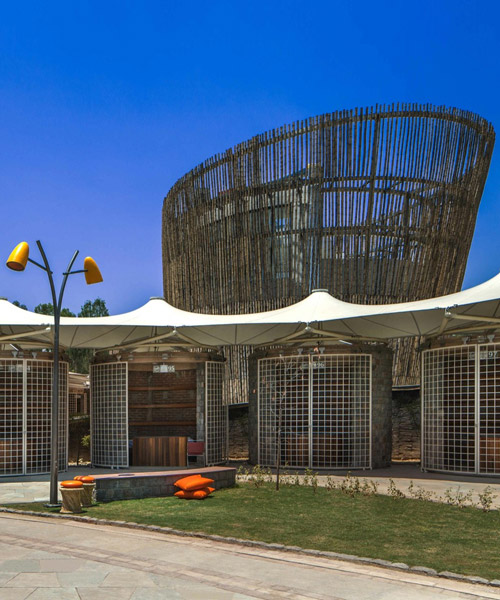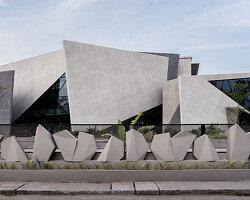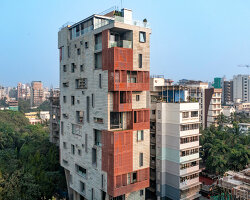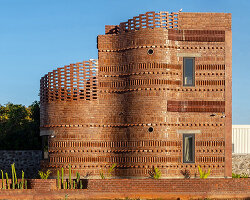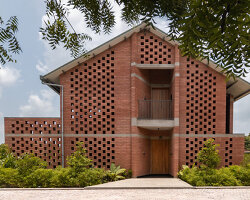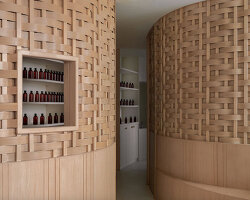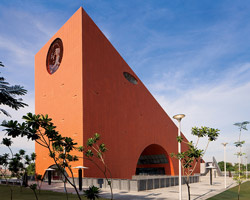the delhi tourism and transportation development corporation (DTTDC) has invited entries for a ‘dilli haat’ in janakpuri, a residential/industrial area of new delhi. with the DTTDC promoting music all across delhi, the underlying layer that bonded with the overall program shops and bazaars selling crafts and injecting a new life into this part of delhi became its rhythmic ‘haat beat’, with the aid of architecture consultancy firm, archohm.
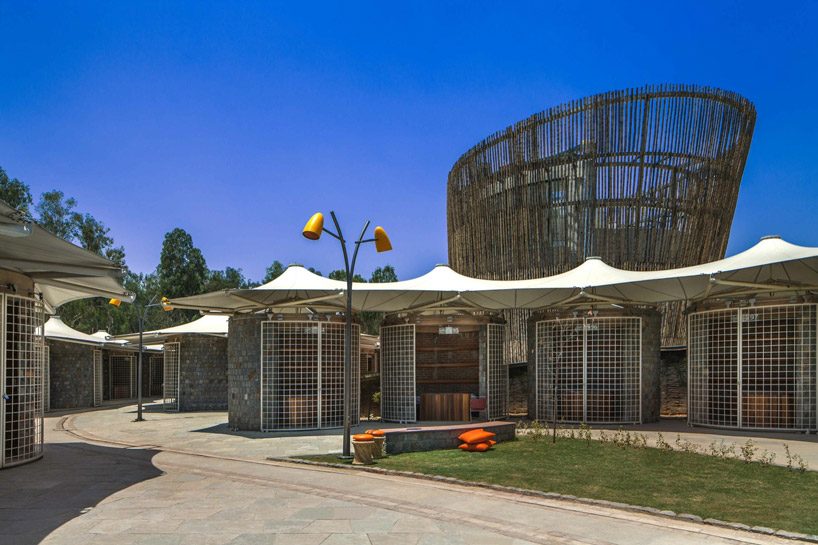
bamboo is celebrated through its extensive and innovative usage as a brise-soleil, screens for baskets and food courts, as sculptures for street furniture or simply as the naturally growing thickets
image © andre fanthome
the structure of its built environment, designed by architecture consultancy firm archohm, was also on exhibit; offering an exciting opportunity to become a voice and a venue with a vision to fulfill social outcomes relating to equality, dignity and inclusivity. in celebrating the ebullience ‘joie de vivre’ of the human spirit, out of a deep rooted love towards it, was the establishment of a new found version of the ancient indian traditions of sanskaar-value systems.
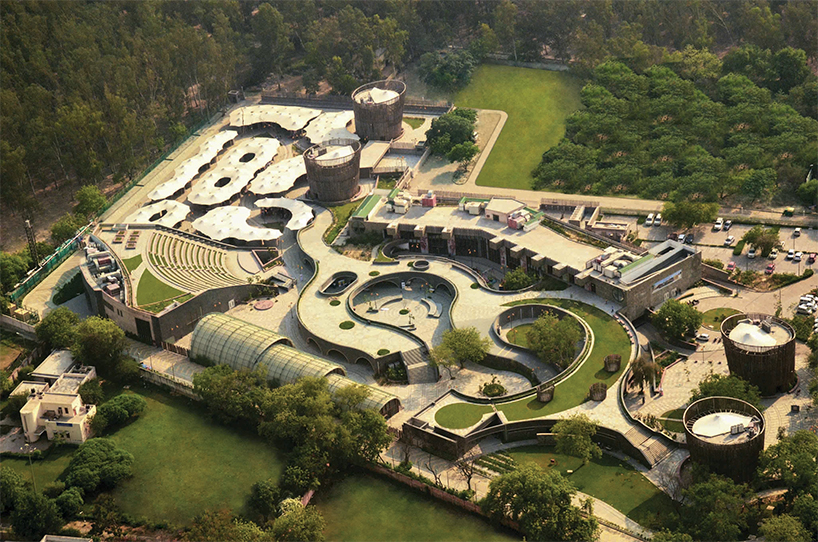
as an ecologically sound step, kota stone, red agra stone, delhi quartzite and slate can be found throughout the project
the project comprises of two adjacent sites which were a part of a huge green belt. dilli haat occupies the larger 6-acre site and is adequately connected by public transport. it was a challenge to retain and replenish the green cover which could subdue the prosaic urban character, even while taking up extensive building work. the majority of the ‘constructed surfaces’ are clad in a third layer of greenery. bamboo is celebrated through its extensive and innovative usage as a brise-soleil, screens for baskets and food courts, as sculptures for street furniture or simply as the naturally growing thickets.
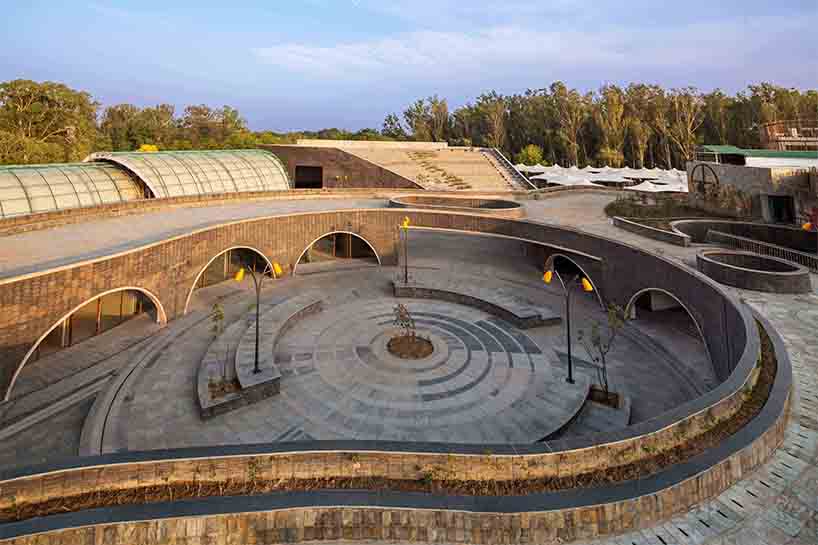
the canopy-membranes keep the heat away while letting in toned light into the informal shop clusters
the complex shades itself through its stone cladding, providing a layer of insulation through its thickness and thermal mass. however, a radiant cooling system with air-cooled chillers is embedded in the floor to keep the expansive space at a comfortable ambient temperature. the shops that do not have AC use light tensile canopies that not only act as free floating shading devices, but also help facilitate cross ventilation.
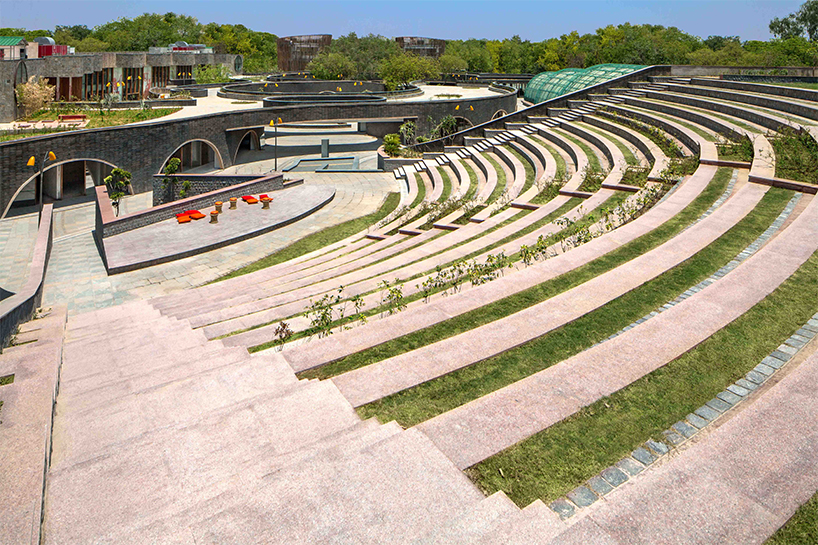
the sunken auditorium sports a green roof doubling up as an open air amphitheater

the use of solar energy and rainwater harvesting is practiced here at the dilli haat
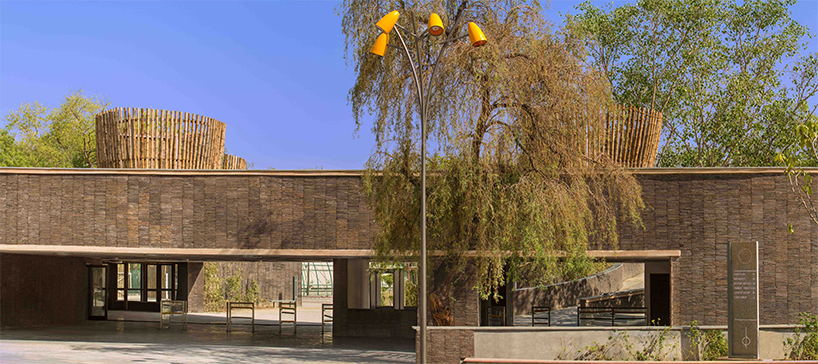
the project comprises of two adjacent sites which were a part of a huge green belt
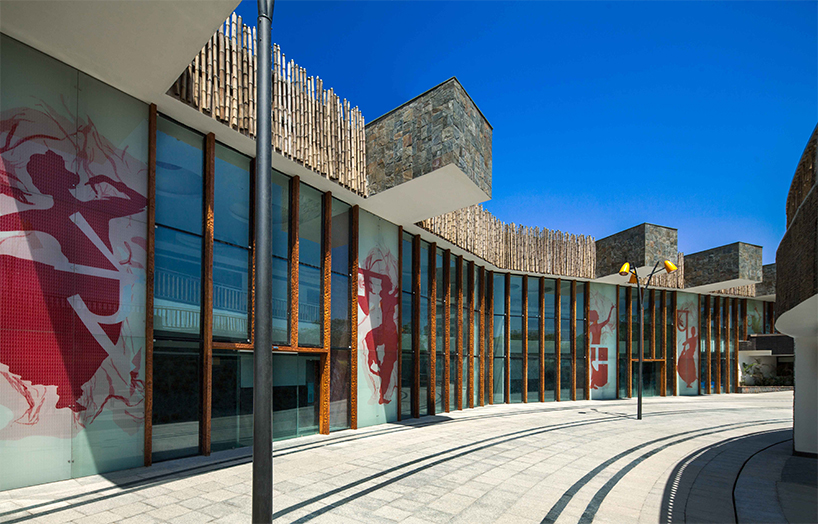
steel has been used frugally as the architects geared towards using green and natural elements
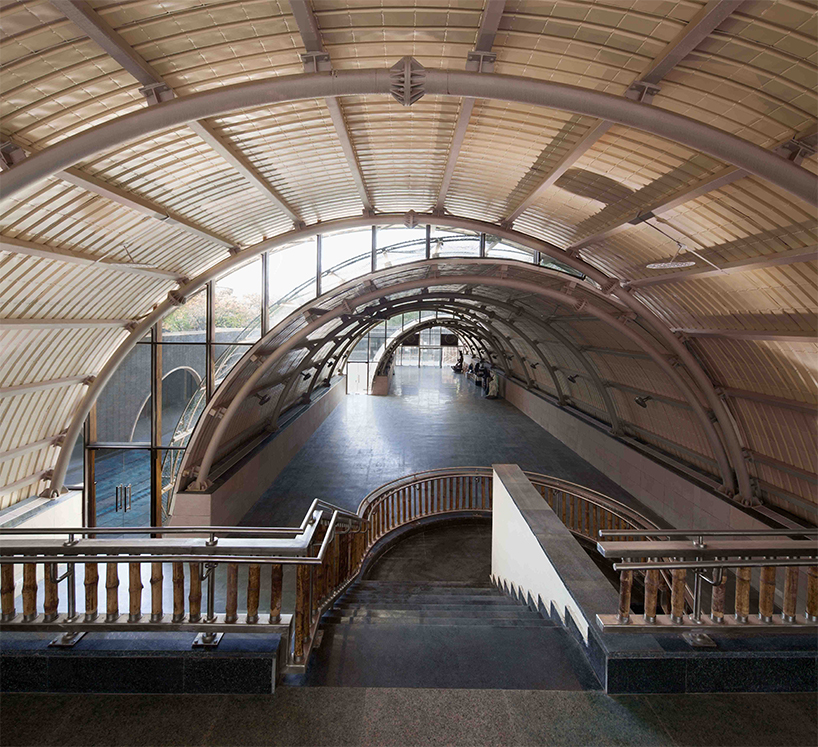
the complex shades itself through its stone cladding, providing a layer of insulation through its thickness and thermal mass
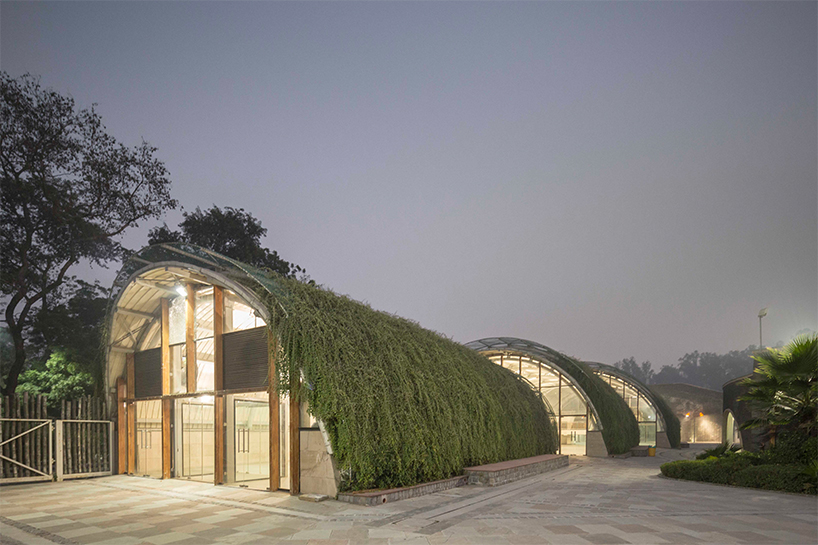
the entire project is illuminated with LED lights to minimize costs and for longevity

the entrance to the dilli haat bazaar
designboom has received this project from our ‘DIY submissions‘ feature, where we welcome our readers to submit their own work for publication. see more project submissions from our readers here.
edited by: lynn chaya | designboom
Save
